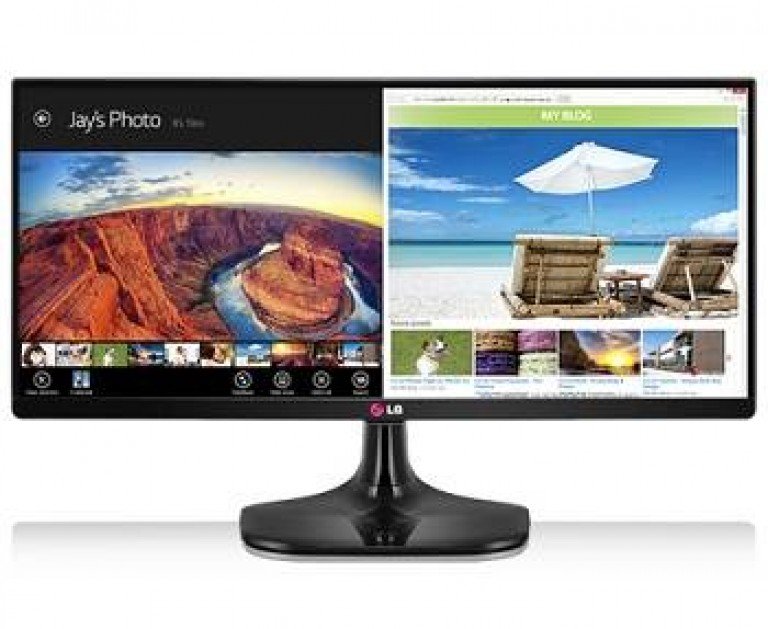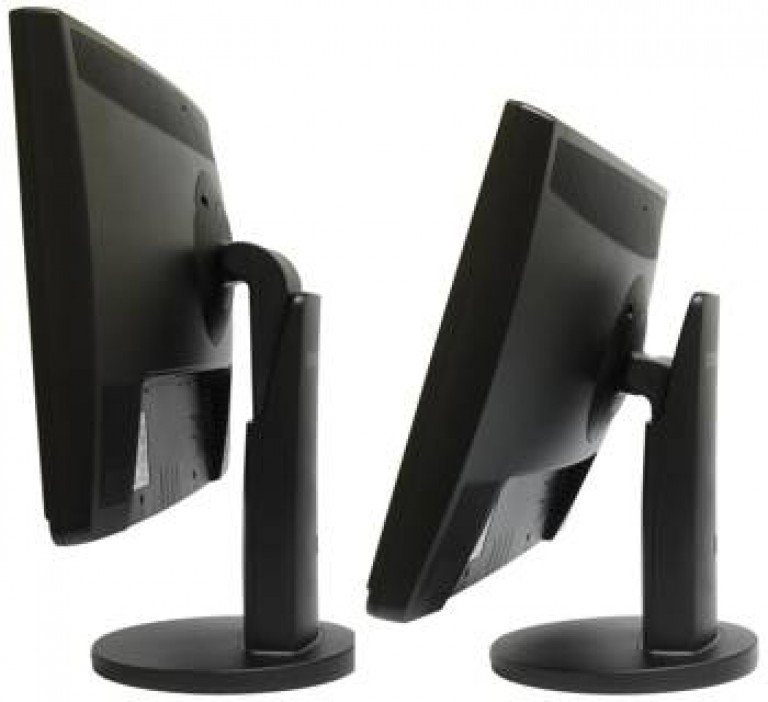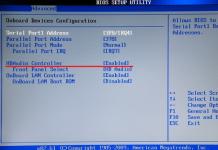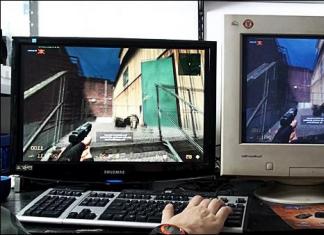What type of matrix is better, optimal screen diagonal, monitor connectors, how to choose the best monitor in terms of price / quality?
Today we will learn how to choose the right monitor. And if you think that this is a waste of time, then you are very mistaken. The fact is that a monitor is bought for many years, and your health and comfortable work for many years depends on the correct choice of it.
If you are going to work with graphics, then the choice of a monitor must be approached very responsibly, otherwise you will not be able to correctly calibrate it. Color in graphics is of paramount importance, so the monitor must be from the best manufacturers.
Which monitor manufacturers are better
Today the best monitors are produced by Dell and HP, but due to their high cost, they are not as popular as Samsung and LG monitors. The first one is a little more expensive, but I like it better because of the high image quality.
If you want something cheaper, then pay attention to monitors from Acer, ASUS, BenQ, Philips, Viewsonic and NEC.
What to look for when choosing a monitor
In order to choose the right monitor for your computer, you need to know which basic parameters of monitors are the most important and which are not.
- Matrix type
Matrix Is a LCD monitor screen. Modern monitors have the following matrix types.
TN(TN + film) - the simplest and cheapest matrix, with an average color rendering, clarity, low black depth and a small viewing angle. But such a matrix also has positive aspects - it is a high response speed, which is not unimportant in games. TN-film means the presence of an additional filter that increases the viewing angle. A dead pixel in such monitors glows white.
Monitors with such a matrix are suitable for office tasks, but due to their small viewing angle, they are not suitable for home video with the whole family.
IPS(AH-IPS, e-IPS, H-IPS, P-IPS, S-IPS) - a matrix with high color reproduction quality, good contrast and a wide viewing angle (up to 178 degrees). But the response speed suffers. A dead pixel in such a matrix glows in black.
Monitors with such a matrix are well suited for any task, especially for design and photo processing. Naturally, the cost of such a matrix is much more expensive than the previous one.
VA(PVA, SVA, WVA) is a versatile budget option with good characteristics: something in between TN and IPS matrices. High quality color reproduction and clarity with good viewing angles. The only drawback is poor halftone reproduction.
Pls- a modern and cheaper version of the IPS matrix. It has high quality color reproduction, clarity and a good viewing angle. Since this is a novelty, the cost of such a matrix is still quite high.
- Screen cover type
Matrices have a glossy or matte finish.
Matte screens have a more natural color reproduction and are suitable for any lighting and any task.
On glossy screens, you will see any reflections and reflections from all light sources (lamps, sun). Colors look brighter and dims are sharper, so they are best for watching videos and playing games in a darkened environment.
- Screen size
Screen size is measured in inches and is measured diagonally. A large screen takes up a lot of space, consumes more power and is demanding on the parameters of the video card. But on the big screen it is more convenient to work, watch movies and play.
- Aspect ratio
Now you almost never come across almost square monitors with 5: 4 and 4: 3 sides. On the shelves of stores, there are mainly widescreen screens 16:10 and 16: 9. They are more convenient both for working with tabular data and for watching widescreen films. I’m not talking about games anymore.
There are also monitors with an ultra-wide 21: 9 aspect ratio. Such monitors are more suitable for those who need to open a large number of windows: design engineers, users involved in video editing, or for comparative analysis of something.
- Screen diagonal
The convenience of work and, accordingly, the cost of the monitor depends on the size of the diagonal of the screen. The widescreen 20 ”monitor is perfect for office work. But usually the boss does not think so, and therefore in many offices there are monitors less than 20 ", although the difference in price for 19" and 20 "is not significant.
For home it is better to buy a monitor with a screen diagonal of 22 ”and above. For games, a 23-27 "diagonal is suitable, and for working with 3D graphics or drawings, it is better to buy a monitor with a screen diagonal of 27" or more.
Your choice will depend on the location in the apartment and financial capabilities.
- Screen resolution
Monitor resolution is the aspect ratio expressed in pixels. And, as you know, the more pixels, the clearer the picture and the more information fits on the screen. But keep in mind that the text and other elements will become small. Although in recent versions of Windows, this is easily fixed by scaling.
Now the most common monitor resolution is 1920 x 1080 pixels, or as it is also called FullHD 1080.
But again, do not forget that the more, the greater the load on. This is especially true for games.
In monitors with a screen diagonal of up to 20 ", this is not essential, because they have optimal resolution.
22 ”monitors can have a resolution of 1680x1050 or 1920x1080 (Full HD). It is better to choose a monitor with a resolution of 1920 × 1080, although it is more expensive. at a resolution of 1680x1050, watching videos or playing games will not be entirely comfortable due to the disproportionality of the images of objects.
 Ultra-wide (21: 9) monitors have a 2560 x 1080 resolution, and you'll need a more powerful graphics card to play games.
Ultra-wide (21: 9) monitors have a 2560 x 1080 resolution, and you'll need a more powerful graphics card to play games.
- Color rendering
This is the number of colors and their shades that the matrix is capable of transmitting. For many, a standard set of colors is enough - over 65 thousand. And for designers, higher indicators are more suitable, a maximum of which is 16, 7 million shades.
- Screen brightness
This indicator can be from 200 to 400 cd / m². If you are going to watch movies with the whole family in sunny weather and with the curtains open, then you need from 300 to 400 cd / m², and in other cases, 200-250 cd / m² will be enough.
- Viewing angle
If the screen has a small viewing angle, then you will not be able to watch movies with friends. Your screen will gleam with dark or light spots.
All high-quality matrices (IPS, VA, PLS) have good viewing angles, while the TN matrix has a poor viewing angle.
Choose a good matrix, then you will have no problems with the viewing angle.
- Matrix response time
This is the time in milliseconds (ms) during which the crystals can rotate and the pixels change their color. Modern matrices have a response time of 2-14 ms, so there are no problems with image delay (loop behind the mouse cursor).
There is no need to buy monitors with too low response time (2 ms). low response time only in low quality matrices (TN). And matrices IPS, VA, PLS have a response time from 5 to 14 ms.
For a home multimedia computer, a response time of 8 ms is sufficient, and for a designer, if he is not interested in playing games, a response time of a matrix of 14 ms is suitable.
- Connector types
The image quality depends primarily on the matrix, and only then on the type of connector to which the monitor is connected. 
1.Power connector 220V
- Power connector for monitors with external power supply or speaker power
- VGA (D-SUB) is an analog connector for connecting an old video card. It does not render the image in the proper quality. Obsolete connector.
- and 8. Display Port connector, not available on all graphics cards. Used to connect multiple monitors.
- Mini Display Port connector
- DVI is a digital type of connector that is gaining popularity due to high-quality image transmission.
- HDMI is also a digital connector that transmits not only a clear picture, but also sound. Suitable for connecting the monitor to various other devices (TV tuner, laptop, etc.)
- 3.5mm audio jack for connecting audio from external speakers or headphones to monitors with built-in speakers.
- USB connector for connecting a USB hub built into the monitor.
- USB connectors in monitors with a USB hub for connecting flash drives, mice, keyboards and other devices.
All of these connectors may or may not be present on the monitor. Only the power connector and the DVI connector are required.
- Control buttons
Can be located on the front, back and side. Usually, the settings are made once, so their location does not play a significant role.
- Adjustable monitor height and tilt
 This is also an important point. It is not always possible to adjust the height of the table or chair, so the presence of height and tilt adjustment of the monitor will be very useful. We all have a computer at home, but there is no desire to buy a computer desk for everyone, if only because we do not want to turn the apartment into an office study. The two monitors have stands with good height adjustment and are mounted on coffee tables. And before buying them, you had to put boxes and books, which is not at all convenient.
This is also an important point. It is not always possible to adjust the height of the table or chair, so the presence of height and tilt adjustment of the monitor will be very useful. We all have a computer at home, but there is no desire to buy a computer desk for everyone, if only because we do not want to turn the apartment into an office study. The two monitors have stands with good height adjustment and are mounted on coffee tables. And before buying them, you had to put boxes and books, which is not at all convenient.
- Built-in speakers
Not suitable for playing games or listening to music. Therefore, it is better not to buy such a monitor.
- Built-in TV tuner
Most likely it will not be useful to you, tk. now you can watch any channel online, and the cost of such a monitor will be much more expensive.
- Built-in webcam
Also overkill. Better to buy a quality camera at an affordable price.
- Monitor price
The price depends on the screen size, and not on the quality of the matrix, so choose a quality matrix.
Main parameters for choosing a monitor
In order to choose the right monitor for your computer, it is important to decide for what purpose it will serve you.
For home:
- 22 inches and above
- Large viewing angle
- Response speed 8ms
Three parameters are important for a gaming monitor:
- Response time from 4 ms or less
- Viewing angle from 170 degrees
- Monitor size from 24 inches.
For a designer or photographer:
- Accurate color reproduction
- Large screen size
- Optimal brightness and contrast
- Large viewing angle
These are the parameters that are important when choosing a monitor, but before buying, read reviews on the selected model on the Internet. It happens that a certain party has a certain flaw and people often write about it on the websites of online stores.
You can see how to choose the right monitor for your computer in the video below:
To learn how we are deceived when selling monitors, see below:
Now you are savvy and know how to choose a monitor for your computer.



































